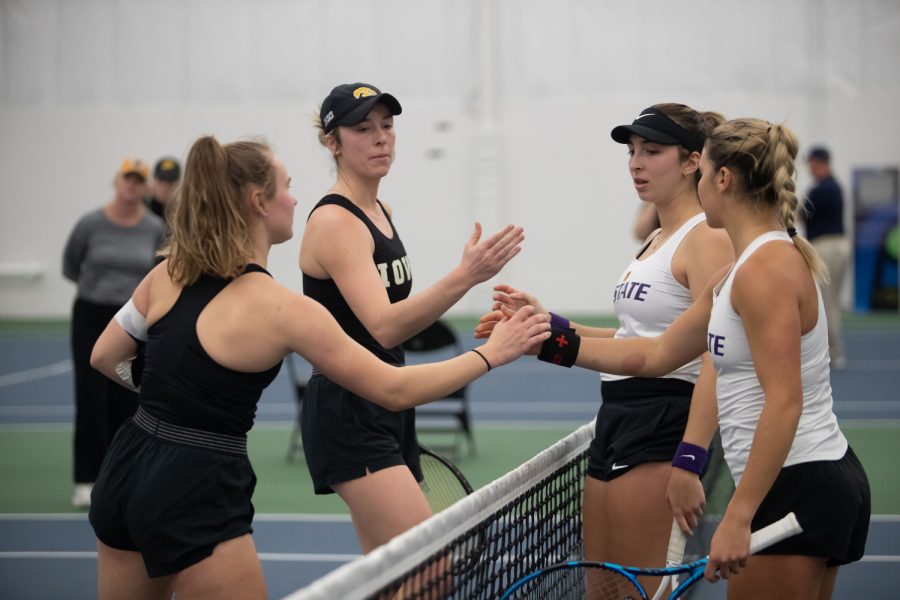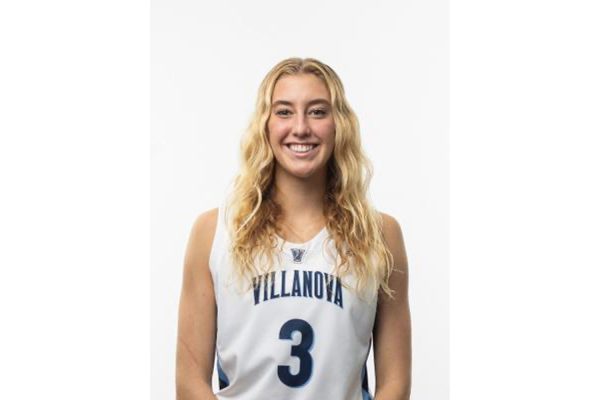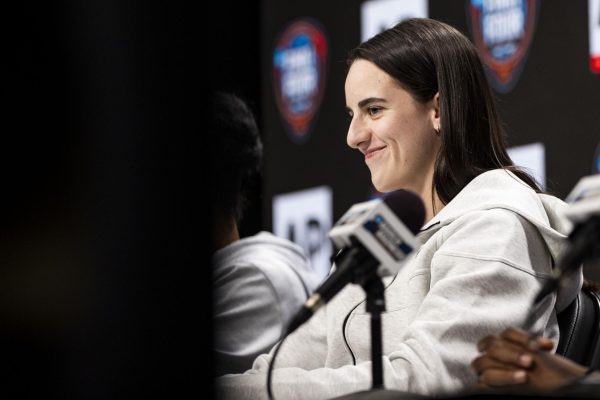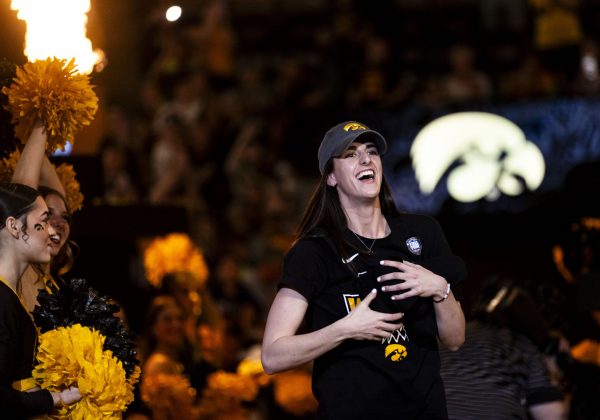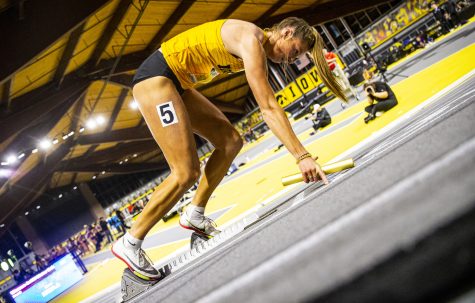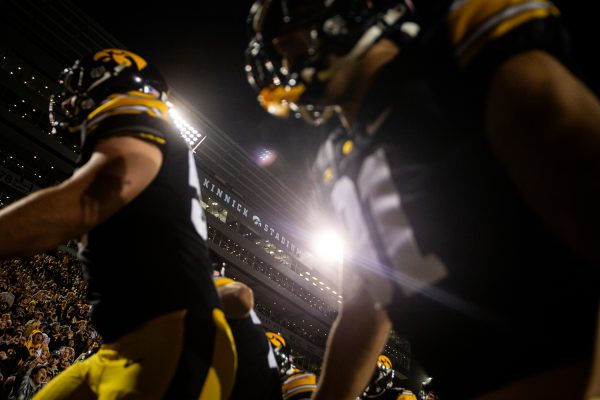Iowa women’s tennis team reflects on strategy behind doubles play
Hawkeye head coach Sasha Schmid and two Iowa players talked to The Daily Iowan about the intricacies of the two-on-two format.
Iowa’s Samantha Mannix and Pia Kranholdt (left to right) shake hands with Kansas State’s Maria Santos and Rosanna Maffei (left to right) after a match during a women’s tennis meet at the Hawkeye Tennis & Recreational Complex on Sunday, Feb. 5, 2023. The Hawkeyes defeated the Wildcats, 4,1.
February 12, 2023
In collegiate tennis duals, the doubles point can prove pivotal.
While six singles matches are played between two schools, each worth a point, the seventh point in the first-to-four-points format is decided via doubles. The school that wins two out of three doubles matches earns the doubles point.
The Iowa women’s tennis team won the doubles point in three of its four dual victories this season.
“There’s a lot of communication, trusting your partner, understanding your positioning, and being able to cover the middle so that the middle isn’t open,” Iowa head coach Sasha Schmid said. “You can’t be two singles players on the court. You really need to function as a doubles pair, as a team.”
To master this teamwork, the Hawkeyes constantly practice the nuances of doubles tennis. In this practice, they develop flexible strategies that best fit the strengths of individual players and the weaknesses of opponents.
In doubles, how the two players position themselves within the two sides of the court is an important part of strategy.
“You can go into different formations where you can have both players on the same side, or you can have one in the middle called the I formation, or you can pull two people back at the baseline,” Schmid said.
Schmid explained how specific formations can be used when they align with her players’ strengths, or conversely, with opponents’ deficiencies.
“Sometimes you can run a formation so whoever you have as the server might have a strength either on the forehand or backhand side,” Schmid said. “You can run a formation to get them to move to the side where they’re going to get more forehands or more backhands … You want to be able to have all of those options that you practice enough so then you can make those adjustments when you’re in the middle of a match.”
Schmid highlighted the home doubles match on Feb. 5 against Kansas State. The Hawkeyes’ No. 2 team of fifth-year senior Samantha Mannix and freshman Pia Kranholdt faced off against the Wildcat combo of senior Rosanna Maffei and freshman Maria Santos.
“We were running I formations so we can get the server’s partner up to try to get pick off a volley at the net,” Schmid said.
With the opponent’s serving partner drawn closer to the net, Mannix and Kranholdt were able to lob balls behind the partner and into the backcourt to score points, collecting a 7-6 tiebreaker victory.
To ensure that these strategies are effective, Iowa junior Vipasha Mehra said communication between partners is essential.
“It’s more of just like, what plays we’re going to run,” Mehra said. “We kind of signal to each other what we’re going to do, we talk about strategies you want to put in play and just see how they’re going to win points.”
Before arriving at Iowa, Kranholdt mainly played singles matches in her native Karlsruhe, Germany. For Kranholdt, volleying close to the net — another doubles strategy — wasn’t an easy transition.
“I wasn’t confident with it and not used to it,” Kranholdt said. “I didn’t want to make a mistake with it, but the coaches and players tell me, ‘It’s better to make a mistake when you’re trying to get the ball close to the net.’ Because with that, you can [earn] points, so I just tried to do it.”
On the team of Mannix and Kranholdt, Mannix is supposed to return each ball with a backhand, whereas Kranholdt should rely on her forehand. Kranholdt finds that she and Mannix work well together with their respective skill sets.
“I think me and Sam play good doubles together,” Kranholdt said. “She has a really good serve, and if she serves good, it’s much easier for me to get a volley and [earn] the point.”



